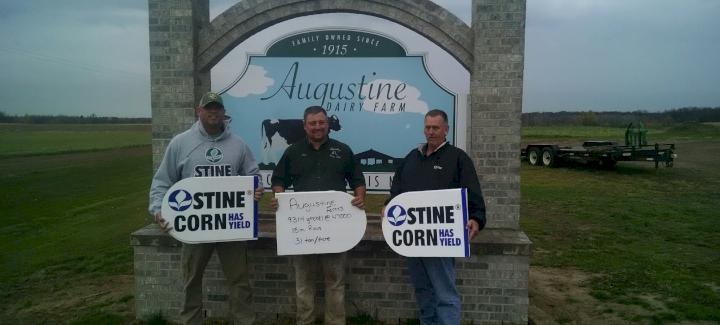
While corn and soybeans performed well this year in Region 1, one area where we’re really seeing a lot of progress is northern Wisconsin, where growers are planting HP corn in narrow-row configurations for dairy silage.
On average, you might see between 18–22 tons of silage per acre in this region with competitor varieties planted in 30-inch rows. However, with Stine HP corn planted in narrow-row configurations, like Stine HP Twin 20s, we’re seeing great results with total digestible nutrients (TDNs) and tons per acre. One particular Stine 9314GTCBLL field — planted in 30-inch rows with inner plants added to make a 15-inch row configuration — averaged 31 tons per acre. This resulted in an increase in tons and TDNs consumed by the grower’s cattle and an increase in milk production.
In the past, we have seen taller hybrids generate larger tonnage because there is more stalk from the plant to act as a filler for the silage. While we’ve generated excellent TDNs with our hybrids in the past, even beating our competition, where we didn’t necessarily win was in tonnage.
Now, with HP corn and narrow-row configurations, growers are able to make gains in both TDNs and tonnage as more plants can be produced per acre. Growers can plant up to 10–12,000 more plants per acre in narrow-row configurations with HP corn because of the corn’s shorter stalks and ability to thrive in high-population environments. And with HP corn, the TDN content is higher because more plants per acre equates to more ears per acre. Most TDNs are carried in the ear of corn, and the stalk is used as more of a filler for the silage. And a higher TDN count means higher milk production for dairies.
We look forward to seeing what HP corn can do for dairy farmers now and in the future. For any questions about the hybrids that will work for your operation, please feel free to contact your regional sales agronomist.
Related Articles
-

Stine® to offer Syngenta’s Victrato® soybean seed treatment in 2026
December 2025 in Agronomy
-

Use Stine’s XP® seed treatments to prevent early injury to your crops
December 2025 in Agronomy
-

Understanding Stine’s enhanced oil profile soybeans
December 2025 in Agronomy
-

Soil sampling sets the stage for spring
November 2025 in Agronomy



